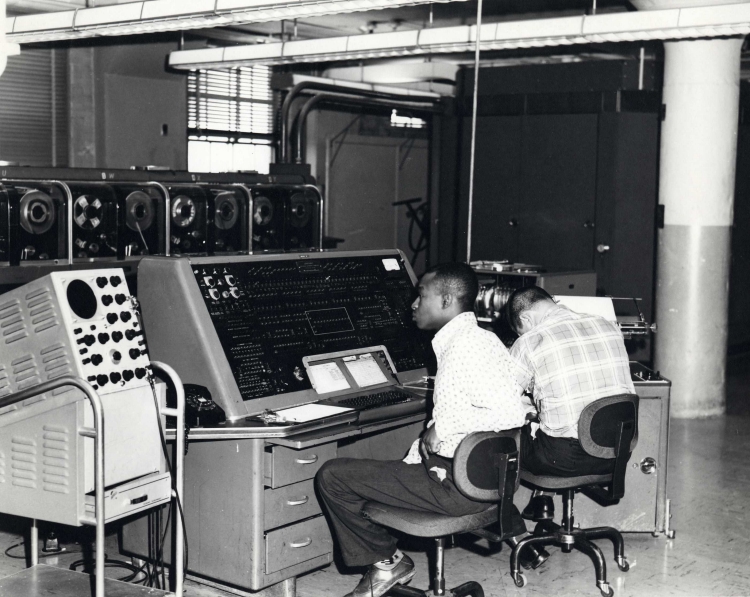FOSDIC
FOSDIC
Although the Census Bureau entered the computer age with the introduction of UNIVAC I in 1951, its data processing speed was hampered by the continued reliance upon punch cards. Transferring questionnaire data to punch cards that UNIVAC "read" and stored on magnetic tape was a time consuming process that remained relatively unchanged since the late nineteenth century.
To take advantage of UNIVAC's speed, National Bureau of Standards scientists and Census Bureau engineers began development of FOSDIC (Film Optical Sensing Device for Input to Computers). Completed in 1954, the first generation of FOSDIC "read" the position of pencil-filled circles on questionnaires and translated the responses to computer code stored on magnetic computer tape.
The Census Bureau first used FOSDIC to process a decennial census in 1960. Enumerators transferred data collected on questionnaires to a "FOSDIC-readable schedule" on which questionnaire responses were recorded as penciled-in circles. At the Census Bureau, technicians used extremely sensitive photography equipment to convert these forms into microfilm. (In 1970 and later censuses, all questionnaires were FOSDIC readable, eliminating the need to have enumerators transfer data from questionnaires to FOSDIC schedules).
These shaded circles appeared as light dots on the microfilm. When the microfilm passed through the Census Bureau's new fleet of FOSDIC III machines (FOSDIC II had been designed for the Weather Bureau), they read the placement of the bright marks on the microfilm and translated them into computer code.
The Census Bureau used updated versions of FOSDIC for the 1970, 1980, and 1990 censuses. FOSDIC proved so successful that it was not replaced until the introduction of optical character recognition for Census 2000.

A Census Bureau technician monitors the scanning of 1960 census questionnaires by FOSDIC.




